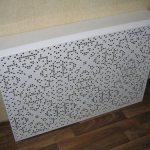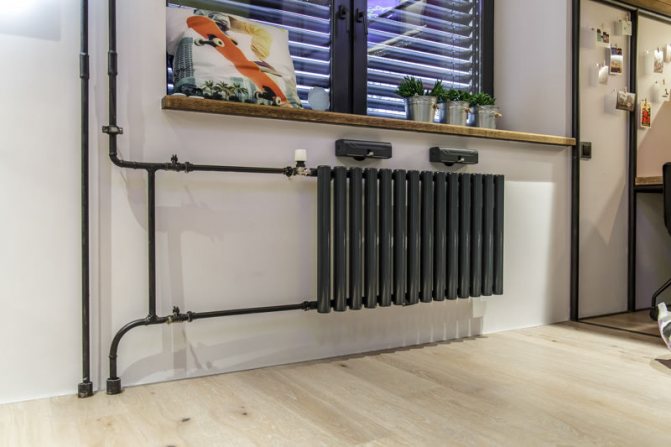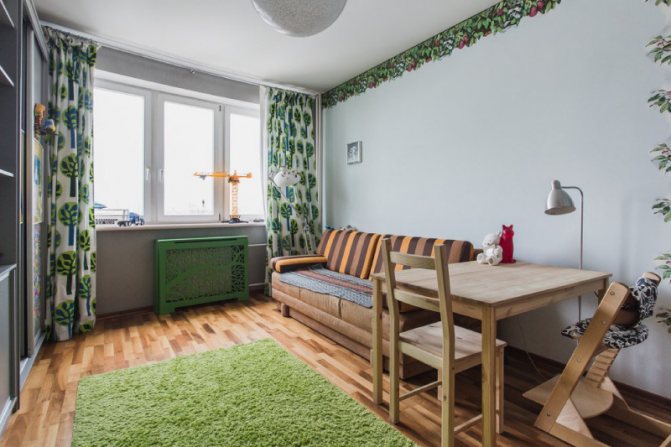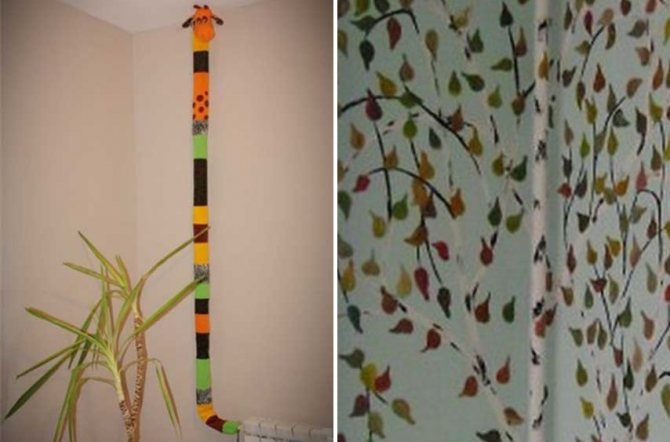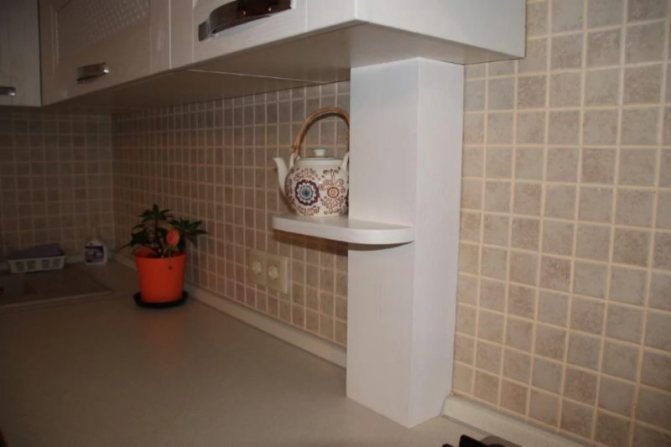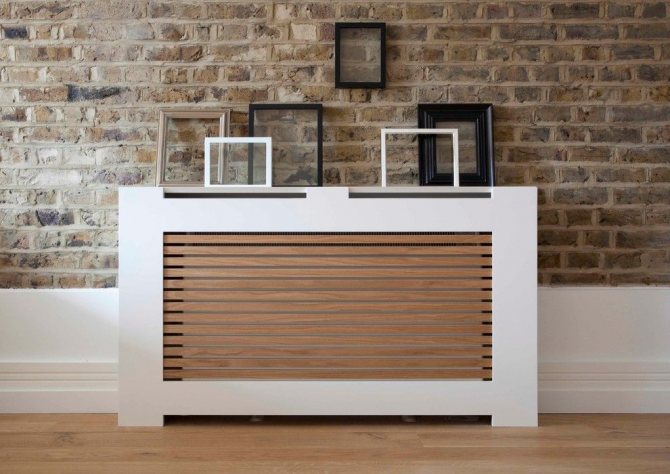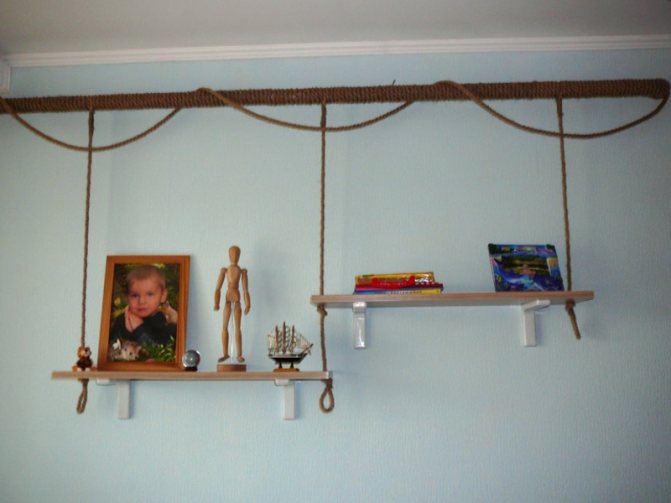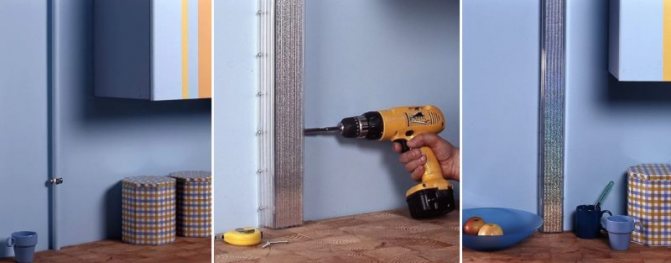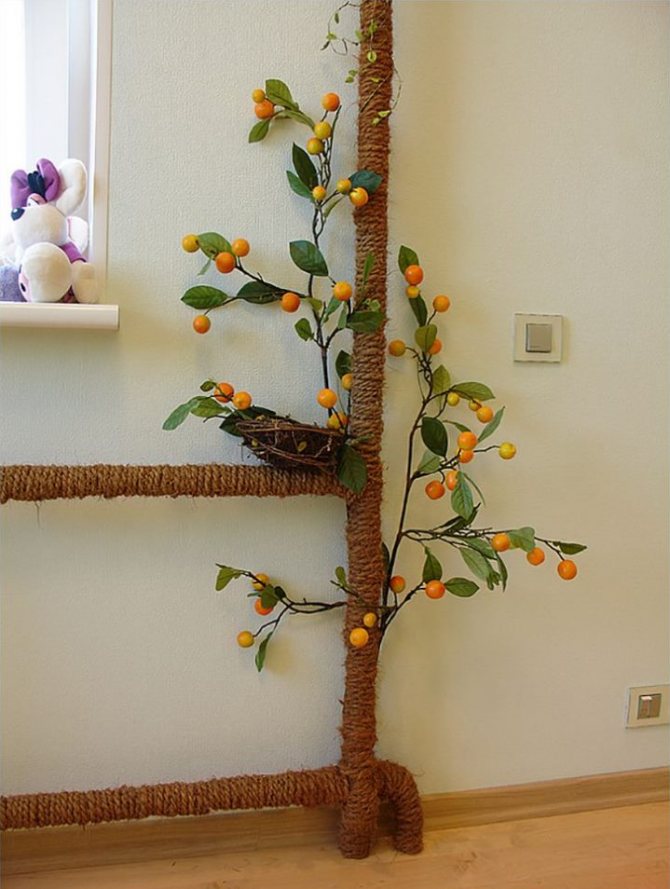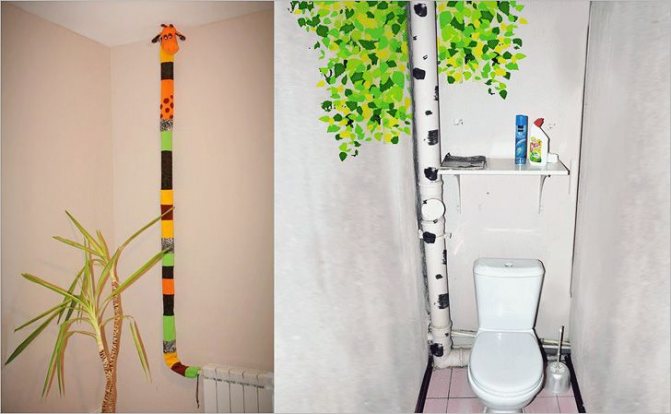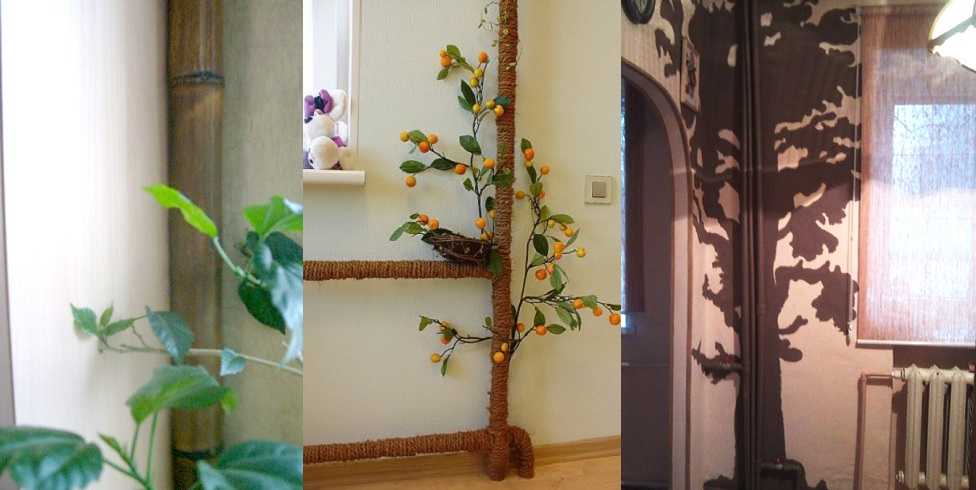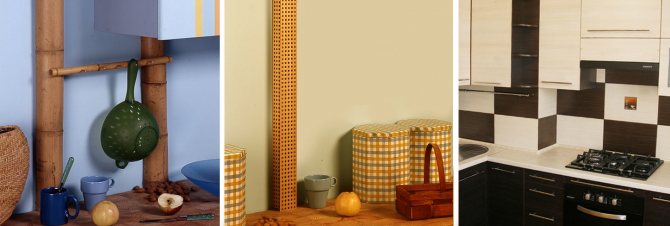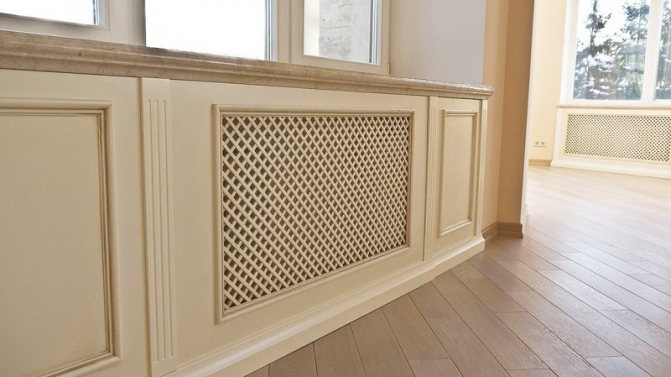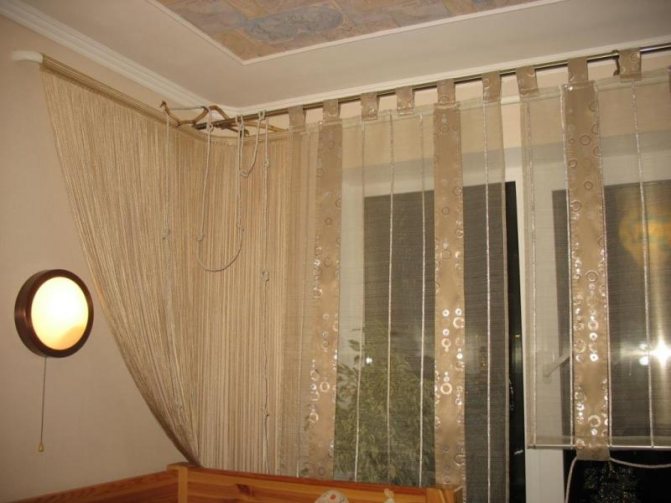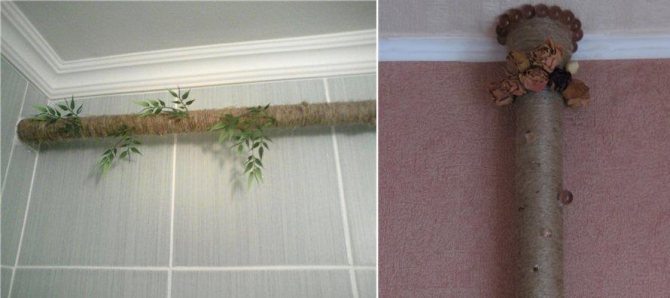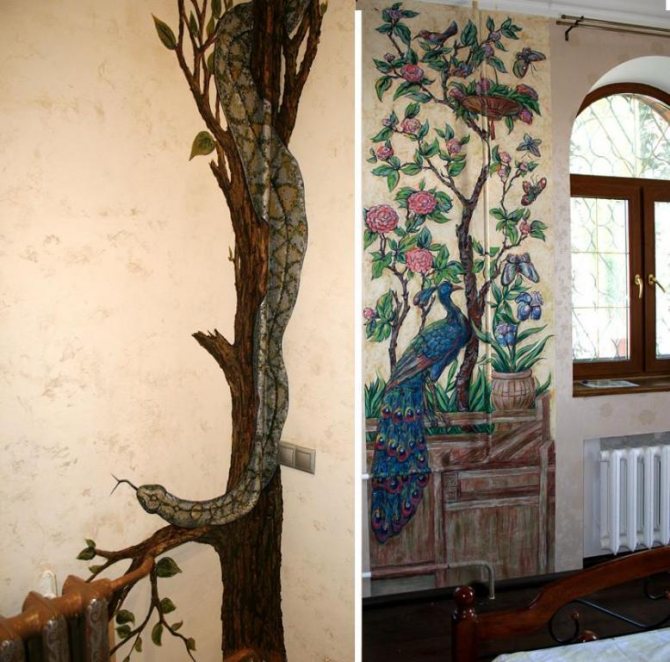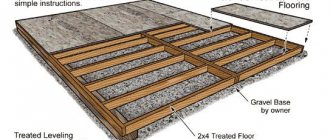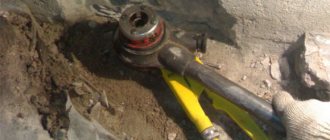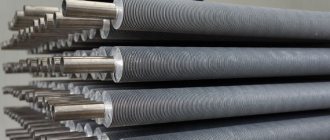Heating pipes are something without which warmth and comfort in the house is impossible. However, these are systems of purely practical importance. They do not give the room a more aesthetic appearance. On the contrary, they are striking, spoil the thoughtful style of the apartment. However, this is not a reason to be sad and sin on the engineers of old buildings (it is in them that the heating systems are so visible), because the structure can be easily decorated with your own hands. This requires very few materials. In addition, there are many ways to decorate heating systems. The choice of method depends on the style of your apartment, the budget for this work, your personal preferences. You can disguise the system so that your guests will not guess where it is located. At the same time, the pipes will continue to heat your home with high quality.
Hiding the heating pipes
What you need to know before choosing a decor method
Before starting work, think about whether you really need to do it. It is sometimes easier to arrange furniture so that the pipes are not conspicuous. When choosing a decoration method that will help you hide the heating risers, you need to consider
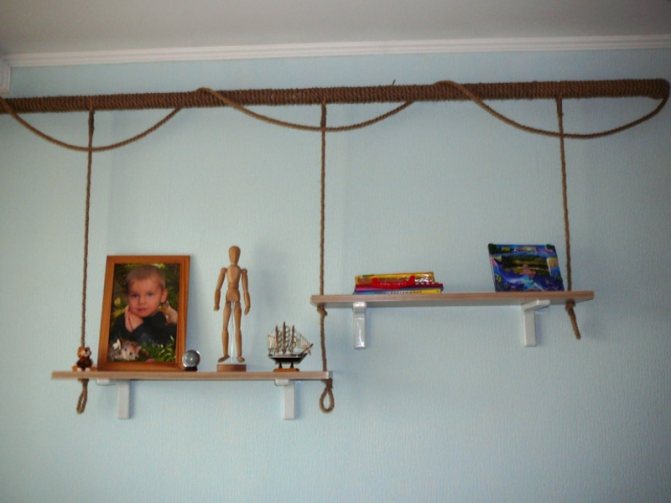
read rules:
- the heating system cannot be hidden irreversibly;
- heating pipes are also involved in heating the apartment;
- the casing that hides the pipes should be easy to dismantle and have ventilation holes.
Strive to make the decorative panel not only beautiful and unusual, but also functional. Remember that you may need to dismantle it in order to replace or repair the pipes. All solutions for masking risers in the interior come down to two solutions: pipes can be changed in appearance or hidden completely.
Video: an example of decorating a heating pipe
When it already seems that the heating with your own hands has already been completely done, it is very important to pay attention to the aesthetic side of the issue. After all, heating devices and pipes with a coolant (we are talking about water heating) - all this negatively affects the interior design. In this article we will try to answer one question: "How to hide heating pipes best?"
In fact, there are not so many ways. We will consider options with apartment buildings and private buildings, since the approach to "hiding" pipes is different here.
Pipe painting
This is one of the most affordable and easy decoration methods, but when painting, you need to take into account a number of nuances. The work is carried out according to the rules:
- First of all, you need to remove the old coating, otherwise the paint will lie unevenly and will only spoil the appearance of the pipe. Use a hair dryer and a spatula to remove the coating. Be careful, especially if the pipe is old.
- Do not overheat the surface of the pipe during operation, otherwise the winding on the thread will burn out. In addition, keep in mind during operation that even in summer the heating system is filled with liquid.
- Lightly heat most of the paint and remove, and fight with the rest with a metal brush.
- For painting, choose alkyd enamels (for example, PF-115 and similar ones), then you do not need to prime the surface before work.
- It is enough to apply two coats.


The choice of paint shade depends on the wallpaper and the interior as a whole. Some apartment owners do not just change the color of the pipes, but paint them. The design of the mural should overlap with the wallpaper or interior elements. To avoid irregularities and smudges on the surface, paint only in summer.
How to hide pipes in the thickness of the wall
A similar method of masking communications is used for heating, water supply and sewer pipes.You can resort to this method at the stage of laying communications. Such work consists of several stages:
- The first step is to draw up and draw a pipe installation diagram on paper. In the process of this work, the diameter of the communications and the thickness of the embedded layer should be taken into account. When it comes to heating pipes, the type of thermal insulation material selected must also be taken into account.
- Then, in the chosen place, where the pipes will run, a groove is made in the wall, which will correspond to the length and size of the pipe and take into account a small margin of depth. This work is performed using a punch or chasing cutter.
- Having wrapped the pipe with a layer of heat-insulating material, if necessary, it is hidden in the made groove, not forgetting to fix it well. To do this, take the brackets and mount them on dowels, which are inserted into the previously made holes.
- After that, you need to check the health of the pipes, and only then seal them in the wall with cement mortar.
Use of decorative coatings
An unusual option is to install unusual casings on heating elements:
- Jute or hemp twine wrapping. The result is a stylish and functional solution. If you have a cat in your house, it will save on accessories for her - the animal will have a place to sharpen its claws. This design has a drawback - you insulate the riser.
- For interiors made in Japanese or Chinese style, decor with bamboo is suitable. To do this, cut the hollow bamboo tube lengthwise. Hide the pipe and glue the cut. To make the pipes stand out, place some more banter in the room.


Lei this plant.
The disadvantage of both options is that they are not universal. Such decorative coatings can be used only in ethnic interiors. In other cases, they will be inappropriate.
DIY drywall box
The easiest way to decorate heating pipes is with drywall. The material is easy to process, has good performance properties and low cost. It is harmoniously combined with other types of finishing materials, thanks to which it fits into any design.
To make a box, you will need the following materials and tools:
- drill;
- metal profile or wooden beams;
- drywall;
- special self-tapping screws with a wide head;
- dowels;
- building level;
- tape measure and pencil;
- saw.
At the stage of preparation, measurements of the hidden structure and marking of the future box are performed. In this case, a small gap should be left on all sides. The pipes must not come into contact with drywall, so as not to obstruct air circulation.
Based on measurements, a metal profile or wooden beams are cut. The first guides are more often used for concrete buildings, and the second ones for wooden or brick buildings. First, the starting profile is fixed to the floor. For this, dowels and a building level are used, since this bar determines the evenness of the entire structure.
Then the upper guide is fixed so that it is strictly parallel to the lower one. Support posts made of CW profiles are installed along the edges. It is necessary to control the location of the guides so that they are strictly vertical. After creating the lathing, the drywall is cut according to the specified dimensions. It is fixed with self-tapping screws with a wide head to prevent the formation of dents. The sheets should fit snugly together.
At the last stage, finishing work is carried out. All joints are covered with putty. After it dries, the surface is primed and a topcoat is applied.
Boxes and false walls
You can make wall panels with your own hands from different materials:
- drywall;
- MDF;
- laminate;
- parquet board;
- reiki.
False wall, unlike panels, involves not just the construction of the box, but also its insulation. The design can not only be made stylish and functional, but also hidden as much as possible from prying eyes. For this, the box or wall is pasted over with wallpaper.
When erecting, it is necessary to take into account that sooner or later the box will have to be dismantled, so do not make a monolithic structure. If you choose this method of masking, leave the possibility of access to the pipes. Make an inconspicuous door or cover the pipes with a lattice screen that can be removed in minutes. However, this will not help preserve the structure if welding is required to repair the pipes.
Drapery with cornices and curtains
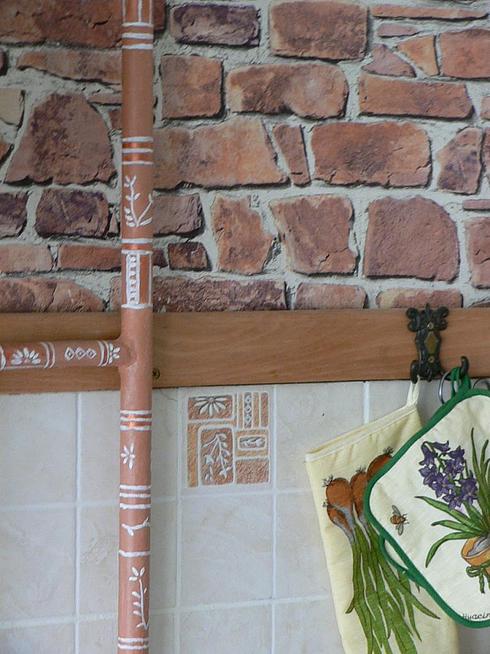

Among the many solutions, decorating with curtains is the most profitable. You can easily change the interior if you want, just change the curtains. The heat transfer of heating elements does not deteriorate, there is always access to them, hidden leaks are excluded. Curtains are easy to match to the surrounding interior. With their help, you can make the room visually larger. They differ in different colors, density, patterns.
In this case, the cornice is installed under the ceiling so that the curtains flow from it to the floor. Ideally, if the draperies hide the entire wall, then the space will look better. So that in the daytime the pipes also do not appear because of the fabric, it is necessary to hang 2 types of curtains at once: dense curtains and translucent tulle. Even during the day, curtains will cover the elements of the heating system. Decorating with curtains can be done regardless of the time of the repair. This method is suitable even in cases when you have changed the interior for a long time.
We recommend reading on the topic:
- How to choose a wood-fired boiler for heating a private house?
- Diagram of a closed heating system with forced circulation
- How is the replacement of heating pipes carried out in a new building?
- How to choose the right bimetallic heating radiators for an apartment?
Decorating ideas without major renovation
Many decoration methods are so simple that even small children can cope with them. Taking the proposed options as a basis, it is easy to supplement them with your own zest and get a unique result.
Coloring - simple and fast
The easiest way is to "dissolve" an ugly pipe in space using paints and a brush, painting the riser to match the walls. In some cases, it is appropriate to paint in the color of the radiators, for example, if they are made in a retro style and represent an imitation of antique batteries with silver plating or gilding. In order not to stain the ceiling and hide the sloppy border of staining, it is recommended to put on a plastic ring, invented for stretch ceilings, on the joint.
The joint line is easy to hide with the help of special rings
You don't need to be a great artist to transform a riser into a birch trunk and complement the picture with a lush green crown on an adjoining wall using stencils. It is not necessary to take birch as a basis, you can "plant" an oak in the room or even get away from the theme of trees and simply decorate the boring "appendicitis" with ladybirds, polka dots, imitation stone or blurred patterns in the avant-garde style.
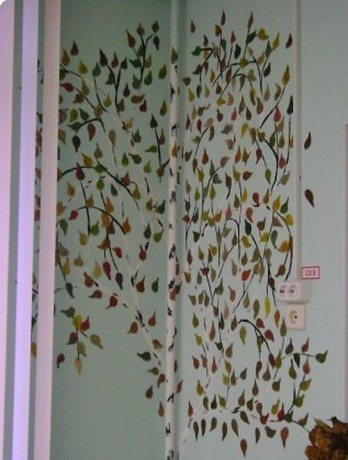

Contrast coloring and a little fantasy
Ideas for creatives
If you don't like working with paints, you can use a rope to decorate. First, the pipe is wrapped with jute or twine, and then decorated with suitable details. These can be cones, shells, sea stones, children's toys, a collection of badges, artificial fruits and flowers. If necessary, the lower part can be easily turned into a cat scratching post, having previously increased its diameter using a cardboard tube.


The heating element is hidden by a decorative rope
A riser hidden in a bamboo trunk will look very stylish. To do this, the trunk is cut to length, the internal partitions are removed and the sections are ground. The workpieces are put on the riser, and then pulled together in several places with a rope of a suitable color. This idea can be used not only for Japanese-style dwellings, but also in other eco-friendly directions. It is recommended to decorate the room with a few bamboo sticks as a distraction.
It is worth fantasizing a little more about how to decorate a heating riser, and among the possible options there may be pipes decorated with lace, satin ribbons, stripes of fabric, openwork knitted covers. The main thing is that the “clothes” do not contradict the design and are not afraid of the effects of heat.
It is not recommended to cover the pipe with vinyl film, but you can first make a frame from toilet paper rolls, and then hide the cardboard under a film with a beautiful pattern. You can also paint the paper in an unusual color, even if you don't like it, getting rid of a bright spot will be easier than repainting a metal pipe.
